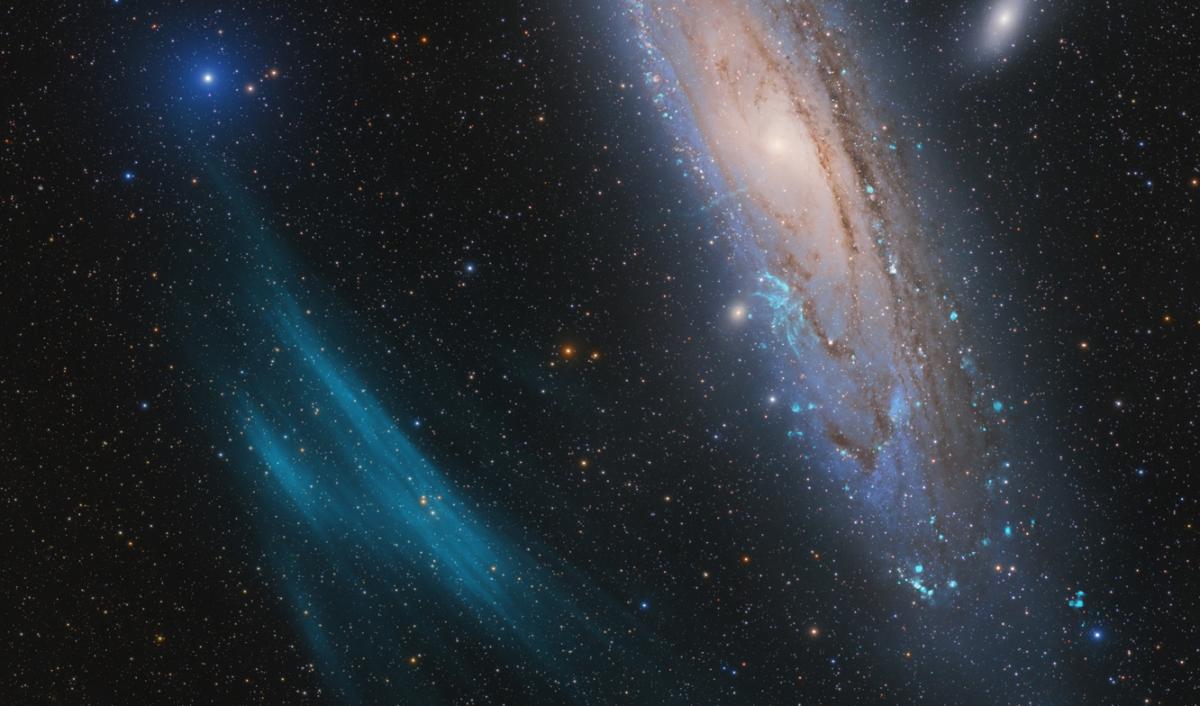[ad_1]
Why hasn’t this been seen before?
“Over 100 years, nobody has seen the arc because it’s so faint and it’s only visible in Oxygen 3 (OIII),” Marcel explains.
When gases like hydrogen, sulfur and oxygen are superheated they glow in various colours, with oxygen giving off a blue colour.
Telescope narrowband filters allow astronomers to look at the light from certain gases, with the most common filters being Hydrogen Alpha, Hydrogen Beta, Sulfur 2 and Oxygen 3.
As three quarters of gas in the Universe is hydrogen, astrophotographers tend to take photos using a Hydrogen Alpha (Hα) filter in order to see this type of light.
Oxygen, by contrast, makes up just 1% of gas in the Universe and is extremely faint, making it difficult to see.
Photographs taken with an Oxygen 3 filter are also subject to distortions from factors such as light pollution, meaning fewer astrophotographers choose to use it.
However, for those willing to put in the long exposure times required to take photographs in Oxygen 3, many discoveries await.
“The arc is not very easy to capture. You have to be an ambitious astrophotographer to catch this arc,” Marcel says.
Bright oxygen clouds have already been discovered in other nebulae such as the Veil Nebula, where oxygen gas is heated, ionises and glows blue.
An unexpected discovery
So how did the team find it? Marcel explains: “It was an absolute accident. No one expected to see it and that’s why it’s called Andromeda, Unexpected, because we wanted to take a beautiful image of the Andromeda Galaxy. And we looked at the first data and we spotted this hazy smudge on the edge of the image.”
The astrophotographers originally thought the smudge could be an ‘artifact’, an anomaly or distortion which shows up on images due to interference from things like light pollution, satellite trails and scattered light.
After much discussion, however, “we came to the conclusion no, it’s not an artifact. It’s real. It’s a new discovery,” Marcel says.

But why haven’t any of the extremely sophisticated cameras up in space spotted this? Essentially, while space telescopes take extremely valuable photographs, they have limitations in their scope.
“We amateur astronomers can capture what Hubble and the James Webb Space Telescope can’t because they only capture a teeny tiny fraction of the sky,” Marcel explains. “With our small and not-so-expensive telescopes, we are able to capture a wide field image of the night sky.”
“We are faster than Hubble, we have a wider field than Hubble, and we can do more exposure times than Hubble. When you have a very tiny, bright nebula, you call Hubble, but when you have a very faint big object in the Milky Way, you call us amateur astronomers.”
He explains that thanks to increasingly sophisticated equipment available, amateurs can act as the eyes and ears of professional astronomers due to their passion, dedication and time.
[ad_2]


